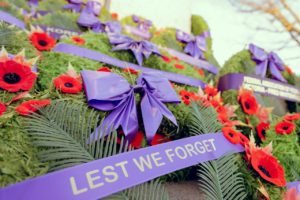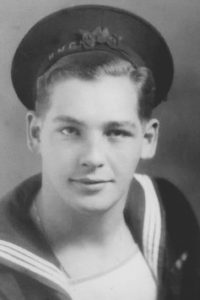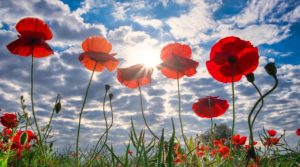 Annually, Remembrance Day is a time to honor those who have served our country in wartime and in peace. We recognize current and retired members of the armed forces, police services, and related civilian organizations to thank them for their service. We also mark this day to acknowledge the rights and freedoms we enjoy as a result of past efforts, and affirm our obligation to uphold and defend those rights and freedoms now and in the future.
Annually, Remembrance Day is a time to honor those who have served our country in wartime and in peace. We recognize current and retired members of the armed forces, police services, and related civilian organizations to thank them for their service. We also mark this day to acknowledge the rights and freedoms we enjoy as a result of past efforts, and affirm our obligation to uphold and defend those rights and freedoms now and in the future.
In the middle of the COVID-19 pandemic, Remembrance Day 2020 will look quite different as all levels of government and Royal Canadian Legion branches across the country scale back ceremonies and ask the public not to attend in person. While we can’t gather in large groups right now, we can still observe the occasion within our household bubbles, and remember.
Remembrance Day in Your Home
As it happens, this isn’t my first time celebrating Remembrance Day* at home. Past illness and injury has afforded me some experience with what to do instead. To help you plan, consider the following options:
- Observe two minutes of silence on November 11 at 11:00 a.m. local time.
- Wear a poppy. While traditionally worn on the left lapel, over the heart, the Royal Canadian Legion endorses self-expression when choosing how to wear a poppy.
- Make a donation to the Royal Canadian Legion Poppy Fund or another organization that supports veterans.
- Stand and sing O Canada. If you’re shy about singing alone, add your voice to the Elektra Women’s Choir as they sing O Canada.
- Watch a local or national service on broadcast television or a social media livestream.
- Call a veteran or a person currently serving to thank them for their service. Thank their spouse, children, and other family members, too.
- Send a card care of the recreation coordinator at a local care home or veterans’ hospital. If you have children, include poppy drawings or other artwork.
- Tell stories about family members who have served so that younger generations can forge a personal connection to historical events including wars. If you like, use the comments feature on this blog post or your own social media channels to tell your family’s Remembrance Day stories and connect with others.
- Peruse the Canadian War Museum’s online archive of photographs and other materials. Every object tells a story.
- Raise a glass and make a toast in honor of Remembrance Day. Splice the mainbrace, if you will. (See the video below on signal flags to learn what that means.)
Worldwide Remembrance
*Of course, Canada is not the only country to honor the contributions of all who serve. Adapt these at-home plans to suit your family’s needs for Veterans Day (November 11) and Memorial Day (May 31, 2021) in the United States, Anzac Day (April 25) in Australia and New Zealand, Poppy Day (November 11 or nearest Sunday to that date) in South Africa, and so on.
What to Watch
My first choice of what to watch to commemorate the day is CBC Television’s broadcast from the National War Memorial in Ottawa. Historically, this service has been attended by the Governor General, Prime Minister, National Chief of the Assembly of First Nations, and other dignitaries. While I appreciate this show of respect from public officials, my favorite part of any broadcast service is the interviews with veterans, some of whom are now in their nineties.
I also make a point of watching the Facebook livestream from the Canadian War Museum. There is a poignant moment at 11:00 a.m. (EST) when the sunlight streams through a single window and falls on the headstone of the Tomb of the Unknown Soldier.
With this post, I would like to honor my grandfathers, both of whom served in the military. Writing about them is an act of remembrance.
Remembering Poppa
 My Mum’s father, Peter Evans, served in the British Navy during WWII. He was a pilot in the Fleet Air Arm and trained in Canada to fly both Corsair and Spitfire planes. I don’t know much about his time in uniform but I do know he was sent to Canada under the British Commonwealth Air Training Plan. Somewhere in Ontario, he learned to fly.
My Mum’s father, Peter Evans, served in the British Navy during WWII. He was a pilot in the Fleet Air Arm and trained in Canada to fly both Corsair and Spitfire planes. I don’t know much about his time in uniform but I do know he was sent to Canada under the British Commonwealth Air Training Plan. Somewhere in Ontario, he learned to fly.
I believe he also spent time in Gibraltar and that his scheduled deployment to the Japanese front was cancelled when the war ended. While his military service concluded when WWII came to a close, his service and sacrifice had a lasting impact on my family. Most materially for me, my grandparents fell in love during the war and moved to Canada in the 1950s, and I was born here two generations later.
Remembering Granpere
 My Dad’s father, Barney Roberge, served in the Canadian Navy during WWII, the Korean War, and on numerous peacekeeping missions. He had a long and distinguished career spanning nearly 25 years. As a Signalman aboard ships including the HMCS Kelowna and HMCS Rivière du Loup, he was a communications expert. In fact, he wrote the first edition of the Royal Canadian Navy Trade Manual: Signalman. In this book, he covered everything from morse code and signal flags to NATO communications and radioteletype procedures. Veterans Affairs Canada captured some of his stories in video interviews giving us all an opportunity to hear him talk about signal flags among other things. While he was Chief petty officer, 1st class (CPO1) , he will always be Granpere to me.
My Dad’s father, Barney Roberge, served in the Canadian Navy during WWII, the Korean War, and on numerous peacekeeping missions. He had a long and distinguished career spanning nearly 25 years. As a Signalman aboard ships including the HMCS Kelowna and HMCS Rivière du Loup, he was a communications expert. In fact, he wrote the first edition of the Royal Canadian Navy Trade Manual: Signalman. In this book, he covered everything from morse code and signal flags to NATO communications and radioteletype procedures. Veterans Affairs Canada captured some of his stories in video interviews giving us all an opportunity to hear him talk about signal flags among other things. While he was Chief petty officer, 1st class (CPO1) , he will always be Granpere to me.
Lest We Forget
From the Navy to the RCMP, many members of my family have served and sacrificed. While I mention my grandfathers here, my personal acts of remembrance honor all the men and women who have served.
